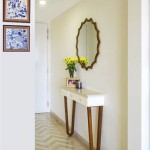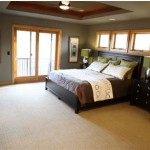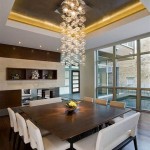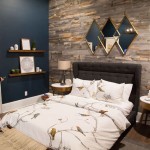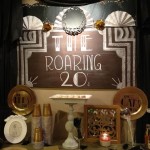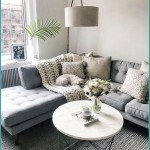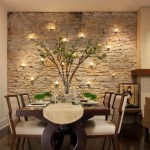Vacation Home Decor Ideas: Creating a Relaxing Retreat
Designing a vacation home presents a unique opportunity to craft a space that offers a sanctuary of relaxation and rejuvenation. Unlike a primary residence, a vacation home often serves as an escape, and the decor should reflect this purpose. The design should be tailored to the location and the activities anticipated, creating a cohesive and inviting atmosphere. Success lies in thoughtful choices that prioritize comfort, functionality, and aesthetics that complement the surrounding environment, making the home a true retreat for residents and guests.
Selecting decor for a vacation home differs fundamentally from designing a primary residence. The goal is to create a space that feels effortless and conducive to relaxation, therefore minimizing high-maintenance elements. Durability is also a crucial consideration, especially in high-traffic areas or locations prone to specific environmental conditions such as humidity or sunlight exposure. Furniture and design elements should endure potential wear and tear from frequent use and occasional instances of neglect. The overall approach should balance style with practicality, ensuring the vacation home remains a welcoming and stress-free haven.
Embrace the Location's Essence
The most effective vacation home decor incorporates elements inspired by the surrounding environment. For a coastal property, this might incorporate the use of natural textures like woven furniture, driftwood accents, and a color palette that reflects the ocean and sky. Mountain retreats can benefit from rustic touches like exposed wood beams, stone accents, and warm, earthy tones. Desert locations might call for minimalist aesthetics, incorporating cacti, succulents, and desert-inspired artwork. Thoroughly researching local architectural styles, materials, and color schemes can provide valuable insight, resulting in a design that feels cohesive and authentic to its surroundings.
Prioritize Comfort and Functionality
Comfort should be paramount in vacation home design. Select furniture that is inviting, durable, and easy to maintain. Invest in high-quality mattresses, plush seating, and soft textiles to create spaces that encourage relaxation. Ensure that furniture arrangements support intended activities. For example, a living room might feature ample seating for socializing, while a dining area should comfortably accommodate meal times. The design should also consider the practical needs of guests. Ample storage space for luggage, personal belongings, and recreational equipment will enhance the overall experience. Furthermore, the inclusion of easily accessible amenities like laundry facilities and well-equipped kitchens simplifies everyday living, contributing to an effortless vacation experience.
Choose Durable and Low-Maintenance Materials
Vacation homes often experience heavier use than primary residences, so selecting durable and low-maintenance materials is crucial. Opt for fabrics that are stain-resistant and easy to clean, such as performance fabrics or outdoor-grade textiles. Consider using hard-wearing flooring options like tile, wood-look vinyl, or engineered hardwood, which can withstand moisture and heavy foot traffic. For countertops, quartz or granite offer both beauty and resilience. When choosing paint, select a semi-gloss or satin finish for easy cleaning, particularly in high-traffic areas. These choices will minimize cleaning efforts and ensure the space retains its beauty over time, providing long-term convenience and reducing the need for frequent updates.
Incorporate Natural Light and Ventilation
Maximizing natural light and ventilation improves the overall atmosphere of a vacation home. Large windows, strategic placement of mirrors, and light-colored walls enhance the sense of spaciousness. Embrace window treatments that allow for light control and privacy. Sheer curtains can filter sunlight, while blinds or shutters offer flexible options for adjusting light levels and blocking direct sun. Cross-ventilation is essential for maintaining a comfortable environment. Utilize ceiling fans or strategically place windows and doors to promote airflow, which helps regulate temperature and reduces reliance on air conditioning. Proper ventilation also prevents moisture buildup, which is especially important in coastal or humid locations.
Develop a Cohesive Color Palette
Maintaining a consistent color palette throughout the vacation home creates a harmonious and relaxing ambiance. The color scheme should reflect the location and the desired mood. Neutral base tones, such as creams, beiges, or grays, provide a versatile foundation. Introduce accent colors through artwork, textiles, and accessories. These accents can be based on the environmental elements, such as shades of blue and green for coastal properties or warm earth tones for mountain retreats. Limiting the number of distinct colors avoids visual clutter. Using a consistent palette helps unify different spaces, creating a flow that reinforces the sense of relaxation and cohesion, making the home feel like a connected retreat.
Accessorize Thoughtfully
Accessories personalize the space and complete the design of a vacation home. Choose items that reflect the location or the interests of the residents. These could include local artwork, photography, or handmade crafts. Incorporate items that add visual interest, texture, and warmth. Throw pillows, blankets, and rugs can introduce color, pattern, and comfort. Display a carefully curated selection of decorative objects on shelves, mantels, or tables. Remember that less is often more; avoid cluttering the space. A thoughtful approach to accessorizing enhances the aesthetic appeal of the vacation home, adding character and charm without detracting from the overall atmosphere of relaxation and simplicity.
Focus on Practical Storage Solutions
Providing ample storage space in a vacation home minimizes clutter and enhances functionality, benefiting residents and guests. Incorporate built-in storage wherever possible, such as customized shelving, cabinets, and drawers. Select furniture pieces that offer a dual purpose, such as ottomans with storage compartments, or beds with under-bed drawers. Consider the needs of guests, ensuring that there is adequate space for luggage, toiletries, and personal belongings. A well-organized vacation home allows guests to unpack and settle in easily. Strategic storage options ensure that belongings are neatly stored away, promoting a clean and tranquil environment.

Vacation Home Inspiration For Your Everyday Abode Decoist

Mountain Cabin Decorating Ideas 8 Easy And Budget Friendly Tips Vacation Property

Jamie Bradley 9sb2edqfwj Cabin Interiors Style Rustic House

Cabin Decor Ideas 10 Best Interior Designs The Family Handyman

19 Log Cabin Home Decorating Ideas For Your In 2025

25 Rustic Living Room Ideas Modern Decor And Furniture

15 Cozy Cabin Decor Ideas For A Warm Winter Nikki S Plate

7 Lodge Decor Ideas To Make Your Home Feel Like A Cozy Cabin The Lakeside Collection

Log Cabin Decorating Ideas For 2025 Rustic Canyon Home

Modern Cabin Decor Ideas For Your Home Away From
